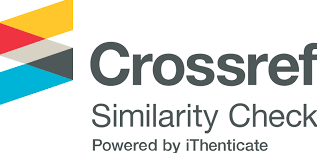Assessment of tolerance to a canker and wilt pathogen of Acacia hybrid, Acacia auriculifomis clones and families of A. mangium by artificial inoculation in nursery
Keywords:
Ceratocystis,, Acacia hybrid,, A. auriculiformis, A. maingium, artificial inoculationAbstract
Acacia species including Acacia auriculiformis, A. magium and Acacia
hybrid (A. mangium A. auriculifomis) are among the main forest plant
species in Vietnam, with an area of over 1,500,000 hectares. Currently,
many acacia plantations, especially Acacia hybrid and A. mangium
plantations in Vietnam are being attacked by a canker and wilt pathogen
Ceratocystis manginecans, causing tree death in many provinces across the
country. It is essential to select and plant Acacia clones that have both rapid
growth and resistance or tolerance to disease. An experiment of artificial
inoculation of C. manginecans on cutings of three Acacia auriculifomis clones, four Acacia hybrid regconised as Technologically advanced
cultivars, six Acacia hybrid clones regconised as National cultivars,
seedlings of six families of Acacia mangium, seeds collected from the 2nd
generation seed garden and 44 newly selected Acacia hybrid clones, the
experiment was conducted in the nursery of the Vietnames Academy of
Forest Sciences in order to select Acacia hybrid clones which are
resistant/tolerant to a canker and wilt pathogen. After 45 days of
inoculation, the results showed that two A. auriculiformis clones Clt18 and
Clt19 resistant at C0 level were relatively more resistant to C. manginecans
(p <0.001) than the A. mangium families which are at C3 level. Meanwhile,
the lesion length of the Acacia hybrid clones is in the range of the lesion
length of A. auriculiformis clones and of the lesion length of the
A. mangium families. Among the hybrid clones, the lesion length of the
BV10 and four newly selected clones (102, BV316, BV567 and 92/1) had
the same (p <0.001) lesion length of the A. auriculiformis clones resistant at
C0 level. The percentage of death trees of Acacia clones/families was
correlated with the lesion length of the pathogen on the stem (R
2
= 0.77 -0.82). Acacia hybrid clones resistant to a canker and wilt pathogen at C0
level are potential varieties for future development of acacia plantations.
References
1. Brawner, J., Japarudin, Y., Lapammu, M., Rauf, R., Boden, D. & Wingfield, M. J., 2015. Evaluating the inheritance of Ceratocystis acaciivora symptom expression in a diverse Acacia mangium breeding population. Southern Forests, 77, 83 - 90.
2. Brawner, J., Chi, N. M., Chi, N., Glen, M., Mohammed, C., Thu, P. Q. & Kien, N. D., 2020. Tolerance ofAcacia populations following inoculation with the Ceratocystis canker and wilt pathogen in Vietnam. Tree Genetics & Genomes, 16.
3. Chen, S., Wyk, M. V., Roux, J., Wingfied, M. J., Xie, Y. & Zhou, X., 2013. Taxonomy and pathogenicity of Ceratocystis species on Eucalyptus trees in South China, including C. chinaeucensis sp. nov. Fungal Diversity, 58, 267 - 279.
4. Chi, N. M., Nhung, N. P., Trang, T. T., Thu, P. Q., Hinh, T. X., Nam, N. V., Quang, D. N. & Dell, B., 2019. First report of wilt disease in Dalbergia tonkinensis caused by Ceratocystis manginecans. Australasian Plant Pathology.
5. Fourie, A., Wingfield, M. J., Wingfield, B. D., Thu, P. Q. & Barnes, I., 2016. A possible centre of diversity in South East Asia for the tree pathogen, Ceratocystis manginecans. Infection, Genetics and Evolution, 41, 73 -83.
6. Glass, N. L. & Donaldson, G. C., 1995. Development of primer sets designed for use with the PCR to amplify conserved genes from filamentous ascomycetes. Applied and Environmental Microbiology, 61, 1323 - 1330.
7. Hà Huy Thịnh, Lê Đình Khả, Phí Hồng Hải, Nguyễn Đức Kiên, Đoàn Thị Mai & Quang, T. H., 2011. Chọn tạo giống và nhân giống cho một số loài cây trồng rừng chủ yếu, tập 3, NXB Nông nghiệp, Hà Nội, 158 tr.
8. Lê Đình Khả, Harwood, C. E., Kien, N. D., Baltunis, B. S., Hai, N. D. & Thinh, H. H., 2012. Growth and wood basic density of acacia hybrid clones at three locations in Vietnam. New Forests, 43, 13 - 29.
9. Nambiar, E. K. S., Harwood, C. E. & Kien, N. D., 2015. Acacia plantations in Vietnam: research and knowledge application to secure a sustainable future. Southern Forests, 77, 1 - 10.
10. Nguyễn Hoàng Nghĩa, Phạm Quang Thu & Nguyễn Minh Chí, 2013. Đánh giá sinh trưởng và chỉ số bệnh của các dòng keo lai và Keo lá tràm mới được công nhận những năm gần đây. Tạp chí Khoa học Lâm nghiệp, 3, 2845 - 2853.
11. Phạm Quang Thu, Đặng Như Quỳnh & Bernard Dell, 2012. Nấm Ceratocystis sp. gây bệnh chết héo các loài keo (Acacia spp.) gây trồng ở nhiều vùng sinh thái trong cả nước. Tạp chí Bảo vệ Thực vật, 5, 24 - 30.
12. Phạm Văn Chương, 2012. Nâng cao độ cứng bề mặt của ván sàn gỗ công nghiệp bằng dimetila dihydroxyl etylen urê (DMDHEU). Tạp chí Nông nghiệp và Phát triển nông thôn, 2, 84 - 90.
13. Tarigan, M., Roux, J., Van Wyk, M., Tjahjono, B. & Wingfield, M. J., 2011. A new wilt and die - back disease of Acacia mangium associated with Ceratocystis manginecans and C. acaciivora sp. nov. in Indonesia. South African Journal of Botany, 77, 292 - 304.
14. Tarigan, M., Yuliarto, M., Gafur, A., Yong, W. C. & Sharma, M., 2016. Other Acacia species as source of resistance to Ceratocystis. In: International Workshop on Ceratocystis in tropical hardwood plantations, Yogakarta, Indonesia, 15th- 18thFebruary 2016, 13 pp.
15. Trần Thị Thanh Tâm, Phạm Quang Thu & Nguyễn Minh Chí, 2017. Nghiên cứu đặc điểm sinh học của nấmCeratocystis manginecans gây bệnh chết héo Keo tai tượng tại tỉnh Thái Nguyên. Tạp chí Nông nghiệp và Phát triển nông thôn, 21, 94 - 99.
16. Trang, T. T., Eyles, A., Davies, N. W., Glen, M., Ratkowsky, D. & Mohammed, C. L., 2018. Screening for host responses in Acacia to a canker and wilt pathogen, Ceratocystis manginecans. Forest Pathology, 48, e12390.








